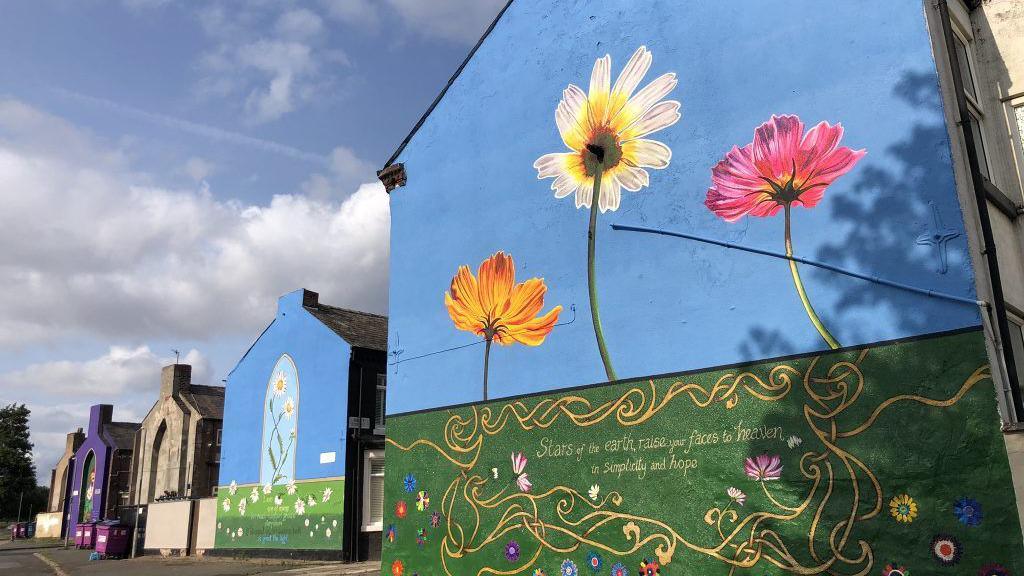Tribute to boy, 5, among flower streets murals
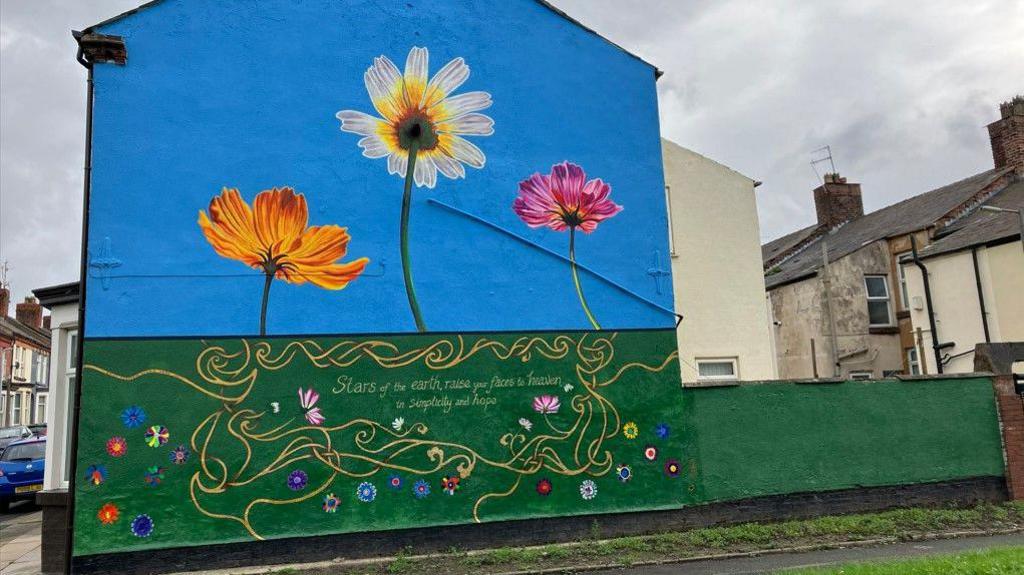
The 11 murals have been produced in collaboration with the residents of the flower streets
- Published
A poignant tribute to the young son of a resident of Liverpool's flower streets is among the artwork featured in a series of murals on the gable ends of homes there.
Eleven murals have now been completed on the six streets in Kirkdale, which are known as the flower streets due to the rows of terraced houses being named after flowers including daisy, pansy and harebell.
The mural on Woodbine Street pays tribute to Daniel, who had cerebral palsy and died in 1998, just before his sixth birthday.
"It means more to me than I thought it would," his dad David Brown, a retired tour guide, said. "I say hello to him on the way into town."
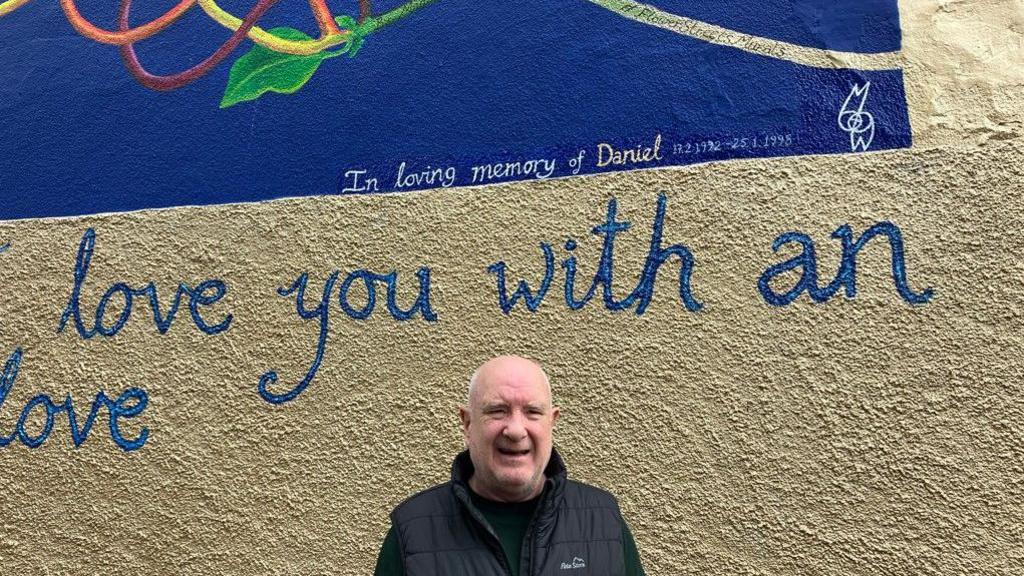
Flower streets resident David Brown said he was touched to be asked if he would like a tribute to his late son Daniel to be included
Following his son's death, Mr Brown had moved into his mother's house on the flower streets.
He said that he was touched to have been approached by artist, Madeleine Pires about including a tribute to Daniel on one of the murals, which also includes the names of some of the children living on the flower streets.
The murals also feature floral motifs added by children from nearby Kirkdale St Lawrence Primary School.
The six-month project was commissioned by Liverpool City Council's Culture Liverpool team and led by local arts organisation, dot-art.
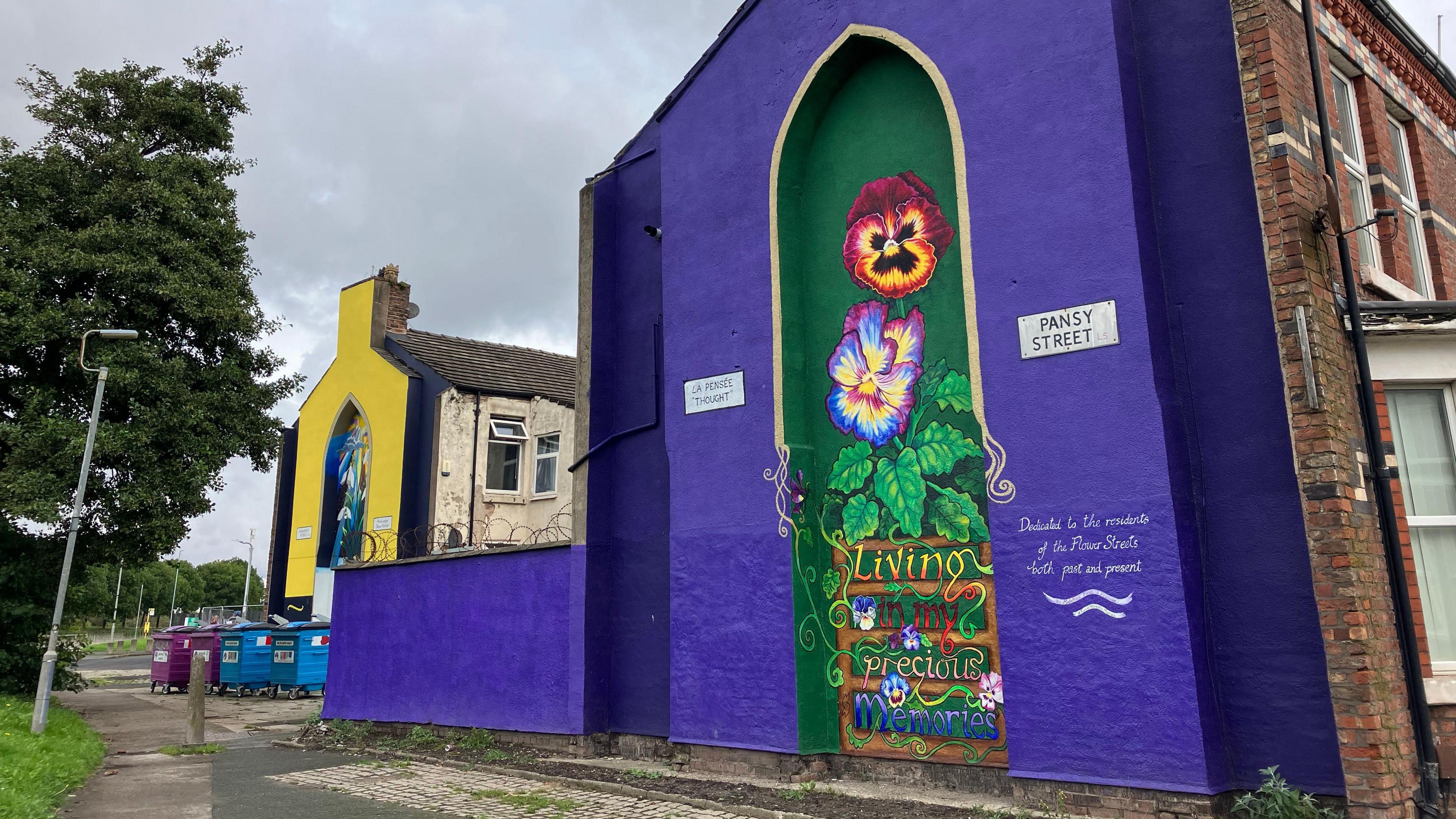
The project was designed to help residents feel safer and take pride in their community
Alex Austin, who lives on Pansy Street, helped to complete the eleventh mural, describing the artwork as "amazing".
He said that seeing the murals when he was out walking his sister's dog brightened up his day and he found the process of painting was calming.
"It will always be a living memory, because every time you walk past you're going to think, 'I was there and I did that bit', like that," he told the BBC while standing next to the eleventh mural.
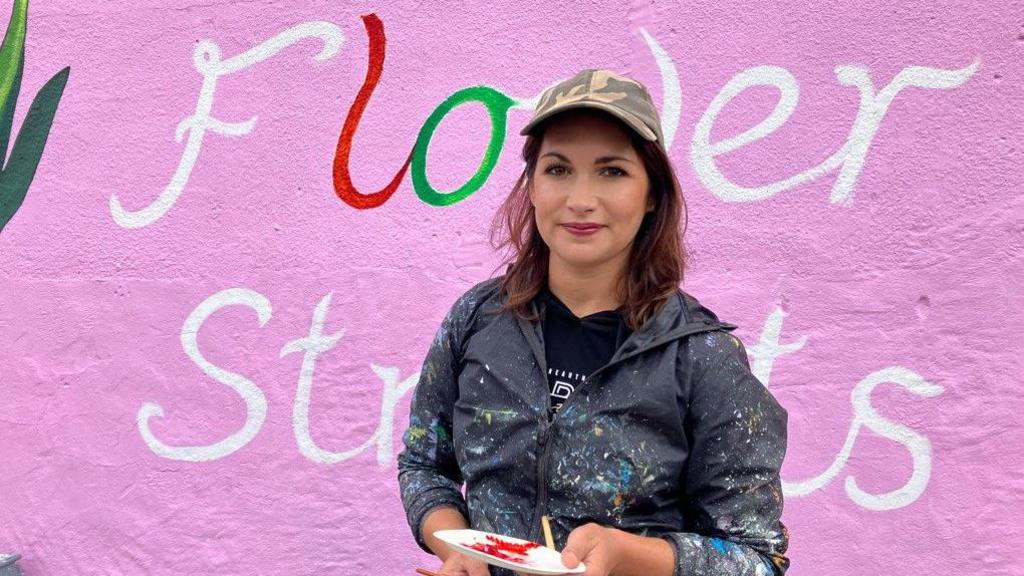
Artist, Madeleine Pires said the murals made people feel like they were being noticed and that their concerns were being addressed
Residents have been working alongside Madeleine Pires from dot-art, to ensure the street art reflects the community living there.
She said she loved to "brighten up people's lives" as "the area had been a bit neglected over the years".
The murals made people feel like they were being noticed and that their concerns were being addressed, she said.
Residents told her they liked it when people visited from outside the area to see the murals.
Jess O'Neill from Culture Liverpool said the project also helped residents who had previously felt unsafe living there.
She said creating a "more conspicuous" space resulted in a fall in anti-social behaviour "because it's harder to be naughty next to something bright and colourful we've found, because there are more eyes generally on it".
Ms O'Neill said the sense of pride in the community had also increased as people were "taking more care of the space because they have seen other people doing it".
Listen to the best of BBC Radio Merseyside on Sounds and follow BBC Merseyside on Facebook, external, X, external, and Instagram, external. You can also send story ideas to northwest.newsonline@bbc.co.uk, external
Related topics
- Published28 August 2024
